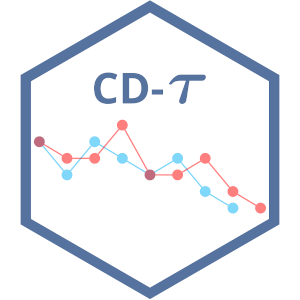There is a Python implementation under the
pythonfolder, which is mainly used to demonstrate the algorithm and is not optimized for speed. The R pacakge is written in efficient C++ with parallel computing support.
The cdtau R package implements the unbiased contrastive divergence (UCD) algorithm based on the paper
Unbiased Contrastive Divergence Algorithm for Training Energy-Based Latent Variable Models (ICLR 2020) by Yixuan Qiu, Lingsong Zhang, and Xiao Wang.
Currently cdtau has not been submitted to CRAN, but it can be installed just like any other R
package. For devtools users, the following command should work on most platforms:
library(devtools)
install_github("yixuan/cdtau")Note that a C++ compiler that supports the C++14 standard is needed.
For best performance, it is strongly suggested linking your R to the OpenBLAS library for matrix computation. You can achieve this with the help of the ropenblas package.
After setting up OpenBLAS, the following steps will optimize cdtau to make the best use of OpenBLAS.
First download this repository to a folder called cdtau, and then uncomment the following line of
cdtau/src/Makevars.
# Uncomment the following line if you have linked R to OpenBLAS
# BLAS_FLAGS = -DUSE_OPENBLAS
Now cdtau/src/Makevars should look like
CXX_STD = CXX14
# Uncomment the following line if you have linked R to OpenBLAS
BLAS_FLAGS = -DUSE_OPENBLAS
PKG_CPPFLAGS = -march=native -I. -DEIGEN_MAX_ALIGN_BYTES=64 $(BLAS_FLAGS)
PKG_CXXFLAGS = $(SHLIB_OPENMP_CXXFLAGS)
PKG_LIBS = $(LAPACK_LIBS) $(BLAS_LIBS) $(FLIBS) $(SHLIB_OPENMP_CXXFLAGS)
Finally, install the package using the following command:
cd cdtau
R CMD INSTALL .The following code demonstrates the training of restricted boltzmann machine (RBM) on the bars-and-stripes data set.
library(cdtau)
# Bars-and-stripes data, Schulz et al. (2010), Fischer and Igel (2010)
d = 4
n = m = d^2
N = 2^d
dat = matrix(0, 2 * N, m)
for(i in 1:N)
{
bits = as.integer(rev(intToBits(i - 1)[1:d]))
mat = tcrossprod(bits, rep(1, d))
dat[2 * i - 1, ] = as.numeric(mat)
dat[2 * i, ] = as.numeric(t(mat))
}
N = nrow(dat)
# Persistent contrastive divergence
set.seed(123)
pcd = rbm_cdk(m, n, t(dat), batch_size = N, lr = 0.1, niter = 10000,
ngibbs = 1, nchain = 1000, persistent = TRUE,
eval_loglik = TRUE, exact_loglik = TRUE,
eval_freq = 1, eval_size = N, verbose = 1)
# Unbiased contrastive divergence
set.seed(123)
ucd = rbm_ucd(m, n, t(dat), batch_size = N, lr = 0.1, niter = 10000,
min_mcmc = 1, max_mcmc = 100, nchain = 1000,
eval_loglik = TRUE, exact_loglik = TRUE,
eval_freq = 1, eval_size = N, verbose = 1)
plot(pcd$loglik, type = "l", col = "red",
xlab = "Iterations", ylab = "Log-likelihood Value")
lines(ucd$loglik, col = rgb(0, 0, 1, 0.3))
legend("bottomright", legend = c("PCD", "UCD"), col = c("red", "blue"), lwd = 2)
Please consider to cite this work if the article or the package has helped you.
@inproceedings{qiu2020unbiased,
title={Unbiased Contrastive Divergence Algorithm for Training Energy-Based Latent Variable Models},
author={Yixuan Qiu and Lingsong Zhang and Xiao Wang},
booktitle={International Conference on Learning Representations},
year={2020},
url={https://openreview.net/forum?id=r1eyceSYPr}
}


